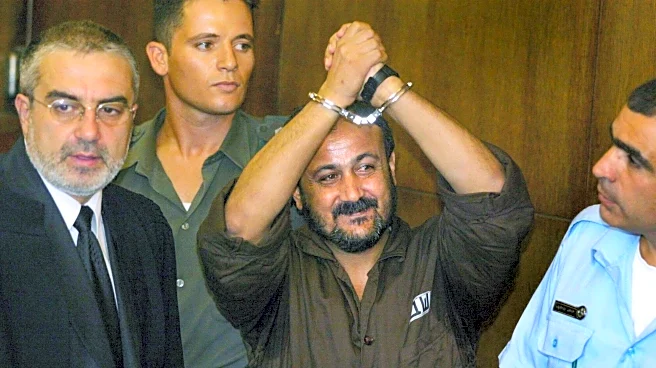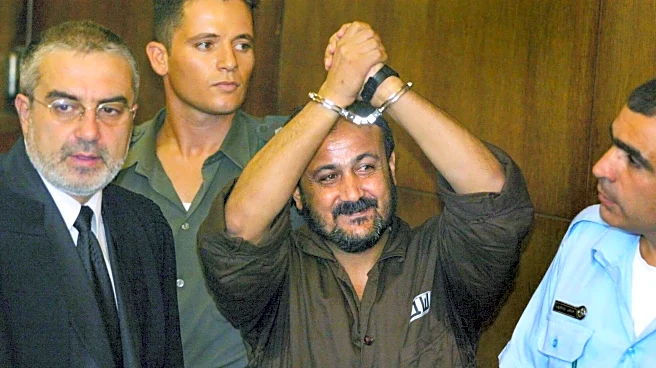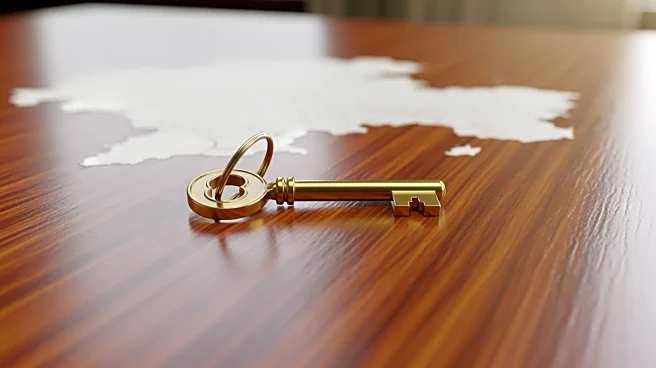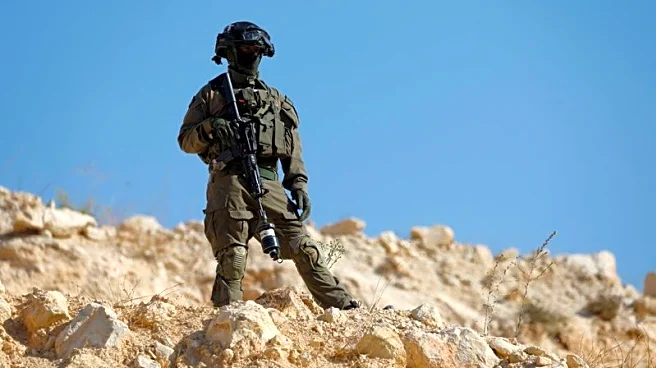What's Happening?
President Donald Trump has been featured on the latest cover of Time magazine, which highlights his role in brokering a ceasefire deal between Israel and Hamas. The cover, titled 'TRUMP'S WORLD,' accompanies
a story detailing the U.S.-brokered agreement that led to the release of hostages held in Gaza in exchange for Palestinian prisoners. In an interview with Time, conducted at the White House, Trump stated that Israel would lose U.S. support if it annexed the West Bank, a move currently being advanced by the Knesset. The cover has received positive feedback from Trump's supporters, with some calling it Time's best cover ever. However, Trump criticized the photograph used, describing it as unflattering.
Why It's Important?
The Time magazine cover and accompanying story underscore President Trump's significant influence in international diplomacy, particularly in the Middle East. The ceasefire deal between Israel and Hamas represents a major diplomatic achievement, potentially stabilizing a volatile region. Trump's warning to Israel regarding the annexation of the West Bank highlights the delicate balance of U.S. foreign policy interests in the region. The positive reception of the cover by Trump's supporters may bolster his standing among his base, while his criticism of the photograph reflects his ongoing contentious relationship with the media.
What's Next?
The future of the ceasefire agreement remains uncertain as both Israel and Hamas have accused each other of violating the terms. Vice President JD Vance has issued a stern warning to Hamas, indicating potential military action if the ceasefire is not upheld. The international community will likely continue to monitor the situation closely, with potential implications for U.S. foreign policy and regional stability. The Knesset's decision on the West Bank annexation will also be a critical factor in U.S.-Israel relations moving forward.
Beyond the Headlines
The Time magazine cover featuring President Trump may have broader implications for media representation of political figures. Trump's criticism of the photograph highlights ongoing tensions between political leaders and media outlets regarding image portrayal. This incident may prompt discussions about the ethics of media representation and the impact of visual imagery on public perception. Additionally, the ceasefire deal's success or failure could influence future U.S. diplomatic strategies in the Middle East.













